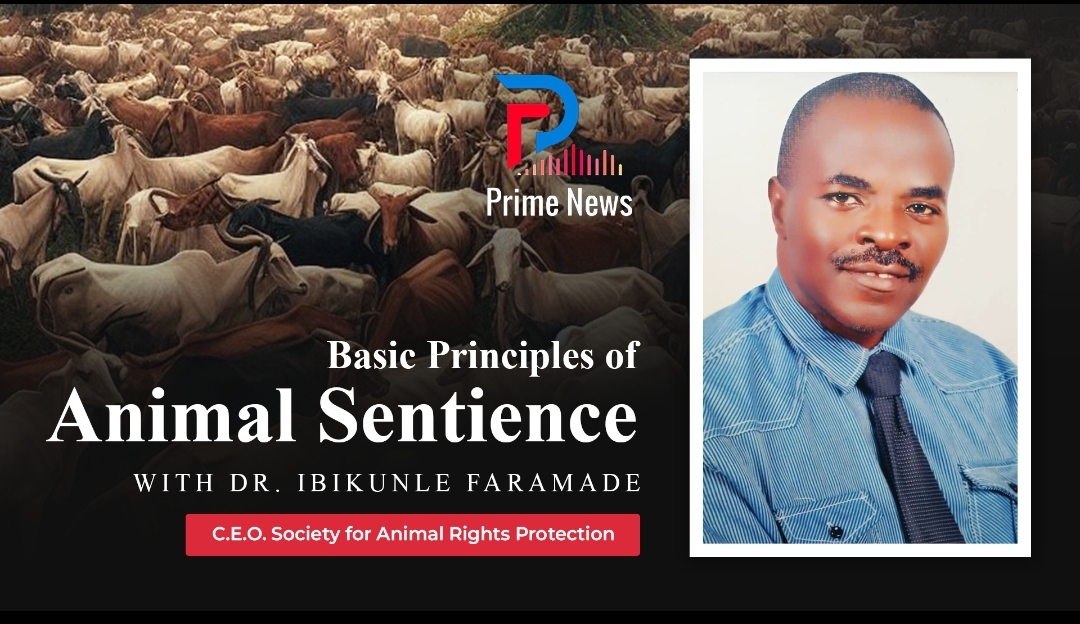By Dr Ibikunle Faramade
The imperatives for animal welfare during disasters and emergencies was discussed in this column last week. It was recommended that paradigm shift is necessary in the methodologies and operations of both the State Emergency Management Authority (SEMA) and the National Emergency Management Authority (NEMA).
This week, as a quick follow up, I wish to draw your attention to the practice of animal rescue in other climes. The purpose of this is to, possibly, take a cue by comparing notes with developments in other countries for the purpose of development of our indigenous template for the benefit of humans and animals.
As previously discussed, disasters and emergencies could occur naturally or through anthropological (man-made) influences, directly or indirectly. Such disasters and emergencies include extreme weather events, floods, wild fires, human conflict (warfare), chemical, biological or radiological emergencies etc.
In the United Kingdom, the London Fire Brigade which was historically established to contain fire outbreaks and other humanitarian disasters by Metropolitan Fire Brigade act (1865)which succeeded a private organization founded by James Braidwood in 1833. Apart from the traditional firefighting mandate, animal rescue has become a core function of the organization in partnership with the police, the Royal Society for the Prevention of Cruelty to Animals and other specialist organizations to rescue animals in distress. For example, 755 animal rescue was accomplished in 2020 alone. To strengthen our domestic efforts, the Nigeria Fire Service should consider incorporating animal rescue unit to its mandates and operations.
In the United States of America, prior to the incidence of Hurricane Katrina in New Orleans in 2005, there were no legal provisions that required that animals be evacuated, rescued or sheltered during emergencies. Because of the dangers inherent in risking human lives during attempted reentry of disaster zones to rescue family pets and farm animals ( which supports family livelihood), the Federal and State laws have been passed which includes provisions for evacuation of animals, rescue and recovery, shelters and tracking in disaster plans.
In 2006, the Federal Pets Evacuation and Transportation Standards (PETS) Act (42 US.C.A. & 5196a-d (2006) was passed. This law directs the Administrator of Federal Emergency Management Agency (FEMA) to develop emergency preparedness plans and ensure that states and local emergency plans take into account the needs of individuals with pets and service animals during a major disaster or emergency.
Since then, more than 30 states have adopted a similar law. The law establishes procedure to coordinate the Federal, State and Local Government agencies, volunteer organizations, animal interest groups and veterinary medical personnel for rapid response to disasters affecting the health, safety and welfare of people and animals.
In Australia, in most of the jurisdictions, the Department of Primary Industries holds functional responsibilities for animal in emergencies and disasters. There are however different legislations that covers specific jurisdiction. For example, in Queensland, Animal care & Protection Act 2001 and Disaster Management Act 2003 governs all activities relating to animals during emergency situations.
In Victoria region of Australia, the Emergency Management Act (1986) and the Prevention of Cruelty to Animals Act (1986) caters for animals. Consequent upon the findings of the Victorian Bushfires Royal Commission, Victorian Emergency Animal Welfare Plan was released in 2011. In New South Wales, the State Emergency and Rescue Management Act (1989) and Prevention of Cruelty to Animals Act and Regulation cater for animals. In 2014, a guideline detailing activities during emergency management plan was released in which a provision was made for large scale evacuation centres that requires multi- agency coordination and response to deliver basic services to individuals and their companion animals affected by an emergency. The same scenario applies to South Australia, Western Australia, Northern Territory and Tasmania where similar lega cover subsist for human and animal rescue during emergencies.
The Australian template, as far as this writer is concerned is worthy of adaptation in Nigeria. Nigeria is sub –divided into six geopolitical zones and thirty-six states and the Federal Capital Territory, Abuja. It is a known fact that because of some cultural orientations and religious prescriptions, companion animals such as dogs and cats are predominantly reared in the Southern parts of Nigeria and to some extent, the middle belt. Large animals and beast of burdens (donkeys, camels, and mules) are more common in the North (and far North of Nigeria). One could do enumeration of donkeys in Oyo State within a week (because they are few) whereas, one can use a month in Zamfara State doing similar enumeration (because they are many). In addition, promoting the welfare of pigs in some parts of the country may be termed sacrilegious in some quarters!
Therefore each state should make laws to protect animals in their domains. The State Houses of Assembly should promote animal welfare in their domains through legislation. The National Assembly should give broad legislation on animal rescue during emergencies by empowering relevant agencies like the Nigerian Fire Service, National Security and Civil Defense Corps, the Nigerian Police Force etc. This would guarantee interagency collaboration during disaster and emergency containments for humans and animals.
In other to achieve positive outcome, the roles of non- governmental organizations cannot be over emphasized. Many of such organizations have enhanced efficiency of government agencies in many countries through timely collaboration and interventions. The Society for Animal Rights Protection, a non-governmental organization dedicated to the promotion of animal rights and welfare in Nigera is determined to contribute significantly to the improvement of animal rescue strategies during disasters and emergencies in Nigeria.
In conclusion, animal rescue during disasters and emergencies is a task that must be done. All relevant stakeholders should collaborate to achieve this feat. It is not only possible but it is achievable.
Dr. Ibikunle Faramade is a veterinary pathologist and a lecturer at the Federal College of Animal Health & Production Technology, Apata. Ibadan. He’s the C.E.O of the Society for Animal Rights Protection, a non-profit and a non-governmental organization dedicated to the promotion of animal welfare, animal rights and prevention of cruelty to animals.
animalrightsprotection2020@gmail.com , +2348028305284



